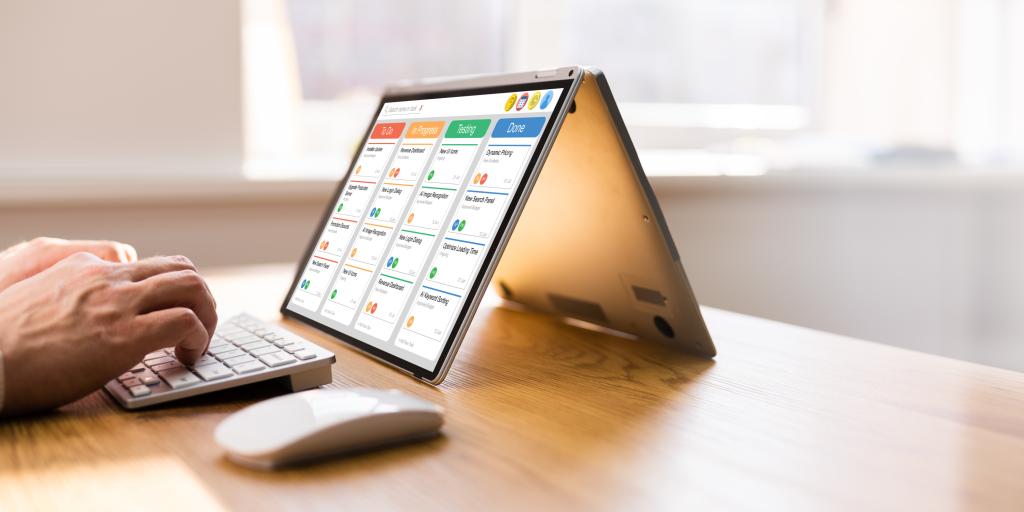
How to Make an Online App for Scheduling Appointments for Patients
In the digital age, convenience, and efficiency rule! In today’s fast-paced environment, medical appointments must be scheduled quickly. Technology has saved us with online appointment scheduling apps. These handy tools streamline the procedure and ensure seamless operations for patients and healthcare providers.
An online appointment booking app may transform your productivity, whether you’re a busy patient or a healthcare practice wanting to improve. Do not worry! This step-by-step guide will help you construct an online appointment scheduling tool that will change how you handle appointments.
The Benefits of Using an Online Scheduling App for Patients and Healthcare Providers
No more sitting on hold or phone tag to arrange a doctor’s appointment. Patients can avoid the inconvenience and irritation of traditional appointment booking using an online scheduling tool. These apps let patients check-in, choose a day and time, and be done! Without much discussion, the appointment is made.
In addition to patients, these apps benefit others. Online scheduling benefits healthcare providers too. Enhanced efficiency is a big benefit. Automation saves healthcare practitioners time spent manually booking appointments. This increased efficiency improves patient care and practice operations.
Patient happiness is another benefit of online scheduling apps. Patients like being able to arrange appointments at their convenience without waiting in line or on hold. These apps also send email or SMS reminders about appointments, minimizing no-show rates.
Online scheduling tools also help healthcare practitioners understand patient appointment booking preferences and behaviors through data analytics. This data can optimize practice resource allocation and strategic planning.
Online scheduling apps benefit patients and healthcare practitioners. Patient convenience, healthcare provider efficiency, and patient satisfaction rise.

Step-by-Step Guide on How to Create an Online Appointment Scheduling App
Healthcare providers, want to streamline appointment scheduling. Creating an online appointment scheduling app may be the answer. You can create an efficient and user-friendly app for patients and healthcare providers with the correct tools and step-by-step advice.
1. Define Your Goals: Determine what features and functions you want in your app. Think about appointment booking, calendar integration, notifications, and payments.
2. Choose a Platform: Choose between web and mobile apps. Each choice has benefits, so pick one that suits your audience.
3. Design User design: Create a simple, straightforward design that lets people navigate the software.
4. Build Backend Functionality: Build a solid backend infrastructure for data storage, security, user authentication, and third-party service interaction.
5. Test and refine: Conduct comprehensive testing during development to ensure optimal performance across devices and platforms. Before launching your app, get beta tester input and improve.
Essential Features and Functions to Include in Your App
Building a patient online appointment scheduling software requires numerous key features and services to ensure a smooth user experience. These features will help patients and streamline healthcare operations. Let’s examine some essential app elements.
First, your app should feature an easy-to-use interface for patients to schedule appointments. User-friendly and attractive, it should make booking appointments with a few clicks easy.
Also important is real-time availability. Patients must check available time slots to choose one that fits their schedule. Real-time updates ensure correctness and reduce multiple bookings and conflicts.
Reducing no-shows requires automated reminders. Patients may recall their appointments and make adjustments by receiving timely emails or push notifications.
Your app should have secure texting to improve patient-provider communication. Users can ask questions or submit more information before their appointment without calling.
Integration with existing EHRs can also boost healthcare provider efficiency. They may access patient records from the scheduling app, reducing tedious data entry and platform searches.
Remember analytics! Analytics capabilities on your app will help you understand patient preferences and usage. It can help you make informed judgments as you refine and improve your application.
Tips for Marketing and Promoting Your Online Scheduling App
You may sell and promote your online scheduling software using numerous ways to succeed.
Use keywords in the title, description, and content to optimize your app for search engines. This will boost visibility and users.
Use social media to expand your reach. Create compelling posts on your app’s features to increase downloads and use. To raise awareness, use Facebook or Instagram targeted ads.
Partner with local clinics and healthcare providers. Give them discounts or unique features for recommending your app to their patients. This can build user trust.
Another excellent method is to provide user testimonials on your website or social media. Positive ratings can strongly impact appointment scheduling app selection.
Don’t underestimate word-of-mouth marketing. Encourage current users to tell friends and family about the app’s benefits.
Success Stories of Healthcare Practices Using Online Scheduling Apps
Healthcare practices are always looking for methods to improve productivity and patient experience in the digital age. Effective solutions include online scheduling tools. Let’s look at several healthcare practices that have used this technology successfully.
A family doctor in a busy suburban clinic discovered that his staff spent too much time on appointment scheduling calls. Their practice now has an online scheduling tool so patients can book appointments at any time, minimizing administrative workload and streamlining operations.
Dental Clinic improved greatly after using an online scheduling app. Patients liked booking dental appointments on their phones or computers without phoning during office hours. This improved patient satisfaction and time slot use.
A large medical group with many specializations implemented online scheduling software at all its locations. The result? Patient no-shows decreased significantly due to automated email or SMS appointment reminders. Patients attended more and clinic resources were better used.
These case studies show how online scheduling software may streamline operations, improve patient convenience, improve provider-patient communication, and raise healthcare efficiency.
You can join these success stories and improve your appointment booking procedure by using a healthcare-specific online scheduling app!

Key Considerations for Maintaining and Updating Your App
Like any technology-based solution, your online scheduling tool needs regular updates to succeed. Important considerations:
1. Regular Updates: App development trends and technology are continuously changing, so keep current. This includes frequently updating your software to fix bugs and provide features that improve the user experience.
2. User comments: Ask patients and healthcare practitioners who use your scheduling app for comments. They can suggest improvements or new features that might benefit them. Add their suggestions to future updates to improve your app.
3. Security: When creating an online scheduling software, prioritize patient data security. To keep sensitive data safe, use encryption, secure login methods, and data backups.
4. Scalability: Your online scheduling app must scale as additional healthcare practices utilize it. Your system should handle rising demand without slowing down. Assess server capacity and improve infrastructure regularly.
5. assistance & Training: Offer extensive assistance and training for scheduling app users. This will enable them to use its features and fix any faults.

